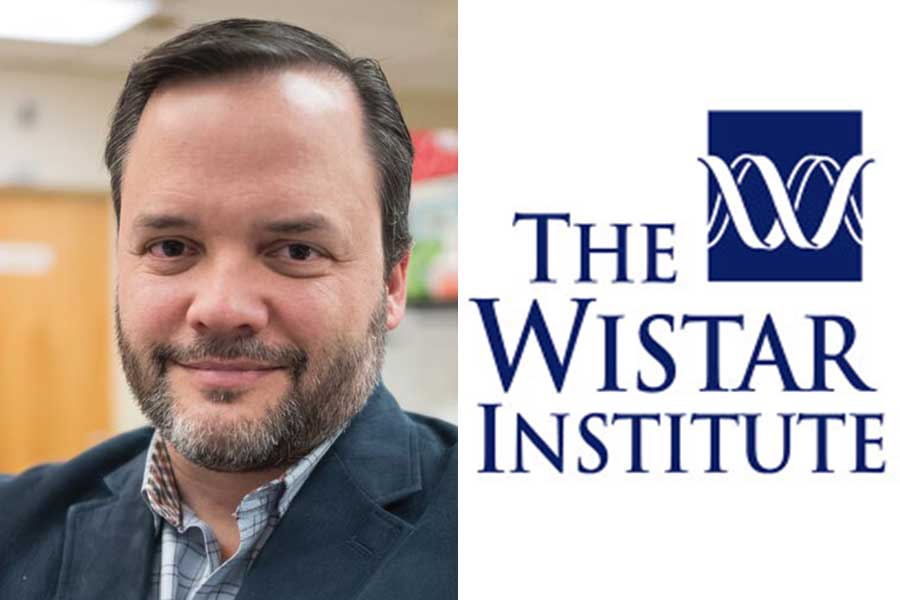Dr. Luis Montaner did not set out to debunk the work of some top European HIV researchers who claimed they had found a way to identify elusive HIV-infected blood cells. But he did.
In an article published earlier this month, Montaner, director of the HIV-1 Immunopathogenesis Lab at The Wistar Institute, and other collaborators from around the world found that the blood cell identified in the study did not expose the hiding places of latent HIV-infected cells. The discovery of those latent cells is what Montaner calls “the holy grail.”
The research at Wistar may have saved millions of dollars from being wasted chasing clues down a dead end. That’s especially important to Montaner because his organization is about to embark on a major trial that will combine established therapies to see whether, together, they will be more effective.
The study, part of a $26-million effort funded by the National Institutes of Health, will focus on 33 Philadelphians to be recruited by another local HIV/AIDS organization, Philadelphia FIGHT Community Health Centers. The subjects of the trials could have an impact on HIV research worldwide, Montaner said.
Philadelphia FIGHT has attracted HIV research to Philadelphia since it was founded in 1990, said Karam Mounzer, chief medical officer and medical director at FIGHT’s Jonathan Lax Treatment Center. Researchers such as those at Wistar have been working with FIGHT for more than 20 years to recruit participants for studies and trials.
“Our research team is very experienced at identifying the right patients,” he said. “We can find those individuals who are a good fit and willing to be part of this quest to conquer the disease.”
Collaborations between research institutes and local communities are not uncommon, but Wistar and Philly FIGHT are especially close, allowing researchers to move ahead quickly, Montaner said.
And so, when a study appeared last April in the prestigious journal Nature saying that a cell known as CD32 was a biomarker for the latent cells that medicine can’t seem to reach, researchers led by Wistar decided to incorporate that finding in their new trials to help them target their research better.
The big question in HIV research today is why the virus goes quiet after therapy yet persists. When therapy is stopped after the virus is no longer detectable, the virus comes roaring back.
The hope in the upcoming study is to find a clue that will lead researchers to those cells containing the latent virus. This cell would be called a biomarker.
“If you had such a marker, you could potentially go in and find HIV and try to get it out,” he said.
This concept is called shock and kill. The therapy would shock the virus out of hiding, allowing the immune system kill it, explained Montaner.
But there’s a problem. The shock-and-kill therapies are not very specific. Like cancer drugs, they affect a patient’s entire system.
“If you had a biomarker that could surgically go for that small number of cells that you need to go after, it would make strategies a lot more efficient and focused,” the doctor said.
The new discovery outlined in the Nature article promised a guide to the reservoirs of latent HIV.
“It was going to make a big difference in our ability to find and study” the latent cells, Montaner said.
But once they started to incorporate the process in the Nature report, something didn’t seem right.
“We thought we must be wrong,” Montaner said. “So we decided to recruit multiple teams to look at this.”
Montaner assembled teams in Barcelona, Utah, Atlanta, Nebraska and at home at the University of Pennsylvania. Their findings, published earlier this month in a journal called Science Translational Medicine, found that the CD32 cells that were supposed to have been the marker telling scientists where the latent HIV cells were hiding don’t find them after all. The cells are still useful, concluded the researchers. They help identify where cells that are reproducing the virus may be.
The next step for the study is to undertake trials that combine Interferon, a protein than can stop a virus from reproducing, with antibodies, said Montaner. Each has been used in the past to some effect. The question is, Will the effect be exponentially better if they are combined? There will also be a trial of a gene therapy.
Those trials are expected to begin in the fall.
“I don’t know if the people who walk around Philadelphia at 12th Street have a realization that they are having an impact on the entire field of HIV research across the globe,” Montaner said. But, he added, they are. n
